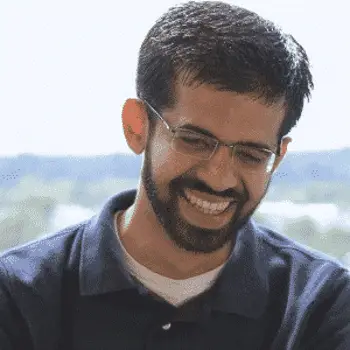Discontinuing amphetamine use is complicated by withdrawal symptoms. Learn how amphetamine treatment addresses those withdrawal symptoms.
Amphetamines are highly addictive and, unfortunately, cheap and easily available, making amphetamines one of the most commonly abused substances.
Recovering from amphetamine addiction is often associated with withdrawal symptoms that may include anxiety, extreme mood changes, depression and insomnia. The adverse withdrawal symptoms can be uncomfortable, making enrollment in a rehab crucial for amphetamine addiction treatment.
Amphetamine Addiction Treatment Options
Interventions for the treatment of amphetamine addiction primarily involve behavioral therapies. Such behavioral therapies include cognitive behavioral therapy and contingency management therapies. Cognitive behavioral therapy helps individuals to become aware of negative thoughts and behaviors that lead to drug use and teaches them strategies to cope with such thoughts and behaviors. Contingency management therapies involve providing positive reinforcement in the form of monetary or other rewards in exchange for maintaining a drug-free lifestyle.
Treatment Can Be Life Changing. Reach out today.

There are various treatment models applied by various rehab clinics for the treatment of amphetamine addiction. The Matrix Model is one such behavioral treatment approach that has been found to be effective in the treatment of various substance abuse disorders. This model involves a multi-faceted approach involving behavioral therapy, family therapy, participation in support groups and various social activities. Unlike other substance abuse disorders, there is an absence of approved pharmacological treatments for addressing the symptoms of amphetamine abuse or for decreasing the chances of relapse. Treatment of amphetamine addiction may involve one or more of the following options:
Medical Detox
Detoxification is the first step in the treatment of drug addiction and involves the elimination of drugs from the system. Drug abstinence tends to cause adverse withdrawal symptoms that may involve stress, depression and drug cravings. A medical detox facility provides constant medical supervision to help patients cope with the withdrawal symptoms of amphetamine addiction. Although the withdrawal symptoms of amphetamines are less severe compared to other drugs, medications may help patients cope with the withdrawal symptoms and help avoid relapse.
Residential Rehab
Residential rehab or inpatient rehab requires residence at the rehabilitation center and allows for 24-hour professional care. Residential rehab involves psychotherapy sessions, supervised medical care and a drug-free space
Outpatient Rehab
Outpatient drug rehabilitation involves visiting a treatment facility a few times a week while the individuals continue with their daily lives including education or work.
Dual Diagnosis
Dual diagnosis rehab programs are specialized for the treatment of individuals with a co-occurring disorder. Amphetamine abuse is comorbid with other psychological disorders and substance abuse disorders. Co-occurring disorders often involve an interaction between the two conditions with one disorder often exacerbating the symptoms of the other and vice-versa. It may be necessary to choose a rehab clinic that specializes in the simultaneous treatment of amphetamine addiction and other co-occurring disorders.
Aftercare and Sober Living
Aftercare is necessary to ensure that the patient does not relapse. This generally involves continued psychotherapy in the form of individual or group therapy as well as participating in support groups. Other forms of follow-up care involve programs such as education and job assistance programs to help individuals reintegrate into society. There are also sober living communities that are based on reducing distractions and offer a cost-effective, substance-free environment for individuals recovering from substance abuse disorders.
Related Topic: Halfway Houses vs. Sober Homes
Inpatient vs. Outpatient Rehab
Inpatient rehab involves staying at the rehabilitation center. Inpatient rehabilitation is especially suitable for moderate to severe addiction, since discontinuing use at home is often extremely difficult. Inpatient rehabilitation provides the individual with a structured environment and the necessary guidance and support around the clock to facilitate recovery. Another advantage of inpatient recovery is that treatment is intensive and the restricted environment allows the patients to focus solely on the problems related to the addiction. Such treatment often involves examining the root causes of the addiction such as social and psychological factors, re-examining personal beliefs, developing personal responsibility and becoming an accountable individual in the social fabric.
Outpatient rehab requires only visiting the treatment facility. This flexibility allows the patient to continue their education or career and continue staying with their families. Avoiding sobriety setbacks is difficult due to the withdrawal symptoms so outpatient rehab may be more appropriate for light users. Outpatient rehab is also less expensive than inpatient rehab due to the absence of costs related to the residence at the center.
Both inpatient and outpatient rehab may involve education about drug use, individual and group counseling, and treatment of co-occurring disorders. However, outpatient treatment can vary considerably in intensity and scope, whereas inpatient rehab is generally more intensive and involves frequent treatment. Inpatient rehab is generally more effective but also more expensive.
How Long Does Rehab Take?
The rehabilitation period for amphetamine addiction depends on factors such as the severity of the addiction and the responsiveness of the patient to the treatment. Inpatient amphetamine addiction treatment may take anywhere between one to three months. However, rehabilitation for amphetamine addiction may last up to six months or more. A longer stay is generally associated with individuals with severe addiction-related issues. The medical staff at the rehabilitation center determine the duration of stay on an individual basis, depending on the extent of the problems and improvement in coping abilities.
What Does Amphetamine Rehab Cost?
The cost of rehabilitation treatment varies according to amenities provided by the treatment center and the duration of the treatment. While selecting a rehabilitation center, it must be understood that more expensive treatment does not always imply more effective treatment. Many higher cost treatments provide luxury living facilities, whereas more modestly priced rehabilitation centers provide basic living facilities without compromising on high-quality treatment.
The cost of inpatient treatment is often an impediment to individuals wanting to receive treatment. However, most private insurance plans do cover either a part or the full cost of rehabilitation for substance abuse disorders. It is essential to find a rehabilitation clinic that accepts insurance. For individuals without health insurance, rehabilitation clinics may direct patients to federal aid or payment plans.
Choosing an Amphetamine Rehab Center
Choosing an appropriate rehab center can be difficult due to the wide variety of treatment approaches deployed by various rehab centers. It may be necessary to consult a medical professional to decide which approach is best suited for recovery for a particular individual. Rehab centers that provide individualized treatment programs according to the problems of an individual may be the most suitable. Other factors include:
- Location: Choosing a rehab center close to home may be useful if the patient has family and friends in the city. This proximity can allow for regular visits during the patient’s stay at the rehab, facilitate family therapy sessions and provide the patient with a support system. On the other hand, a treatment facility in a different location may provide the patient with the feeling of a new beginning.
- Effectiveness: An effective program should cater to the specific drug-related issues of an individual. A particular treatment plan that works for one person may not work for another person. An effective program must not only address drug abuse but also address co-occurring psychological issues. An effective program must help the individual develop interpersonal skills and other skills necessary to lead a sober life after treatment.
- Cost: Treatment at rehabilitation can be expensive and whether treatment at a specific rehabilitation center is covered by the insurance plan must be considered.
- Treatment Methods: There are multiple treatment models that are used for addiction treatment. The approach adopted by a particular rehabilitation center may not be the best fit for a particular patient.
- Staff: The medical staff must be licensed and accredited to provide the appropriate treatment necessary for effective drug rehabilitation. Besides having the appropriate training, the staff should also have experience in the treatment of amphetamine addiction. Effective treatment programs are generally provided by a multidisciplinary team consisting of doctors, nurses, psychologists, counselors, nutritionists, and so forth.
- Success Rate: It is essential to check the reputation of a rehabilitation center before choosing one. Rehab clinics that are part of a nationwide network tend to have a better reputation than standalone clinics. Furthermore, some clinics may specialize in the treatment of certain substance abuse disorders. It is necessary to ensure that the rehab center is specialized in the treatment of psychostimulant addiction.
What to Expect When You go to Rehab
One of the benefits of treatment at an inpatient rehabilitation center is the organized daily routine. This involves various activities and therapy sessions that provide patients with a structured and stable environment. Most rehab centers provide guidelines before arrival at the clinic and these may include:
- Rehab Rules: All rehab facilities have strict rules that may vary from one rehab to another. Most rehabs do not allow electronics such as cell phones or computers. This is mainly to avoid contact with people outside the rehab center who may have access to drugs. Many rehab centers do not allow access to television or music. This is mostly to avoid triggers that may induce drug cravings. Other rules include the prohibition of romantic relationships with other patients or staff, abstinence from drug and alcohol use, and mandatory participation in activities and therapy sessions.
- What to Bring: Most rehab centers generally provide a checklist of items that can be carried to the rehab. Besides clothing and toiletries, one must carry important documents such as a photo ID, credit and debit cards. Only a small amount of cash is generally allowed at most rehab centers. Since rehab centers may not allow phones, a list of contact information may be necessary to make phone calls. Prescription medications in the original container are generally permitted.
What Happens After Rehab?
Rehabilitation is a necessary part of the recovery process from amphetamine addiction, however, leading a sober life requires continuing treatment. This necessity generally involves outpatient treatment in the form of cognitive behavior therapy to deal with any temptations for drug use as well as helping the patient deal with challenges as they reintegrate into normal social life. Support groups may also help recovering individuals to avoid relapsing into addiction. It is also important to take up new hobbies and get involved in social activities to help with the recovery process.
How Rehab Improves Recovery
One of the advantages of enrolling in a rehab program is that it provides a structured and stable environment that helps people avoid setbacks in sobriety and sets them on track for a long-term recovery lifestyle. Treatment at rehabilitation clinics generally involves various forms of behavioral therapy that teaches individuals coping skills to live a sober life while avoiding triggers and managing stressful situations.
Drug rehabilitation programs may also allow for the simultaneous treatment of amphetamine addiction and co-occurring disorders. Rehab puts in motion the process of recovery for individuals with amphetamine addiction by preparing them to lead a sober lifestyle by addressing both drug-related and other social and psychological issues.











